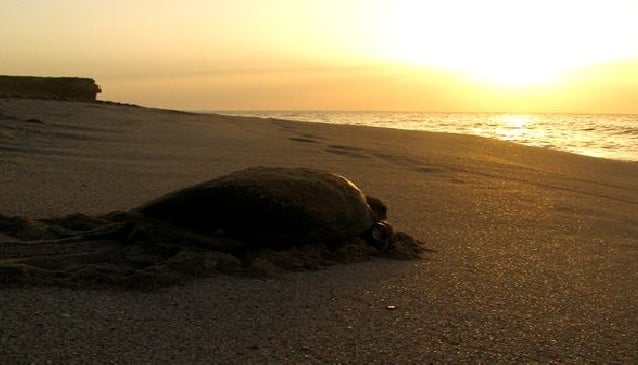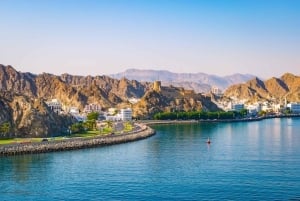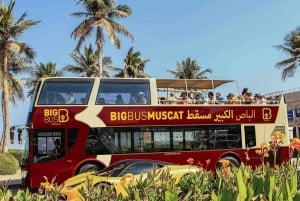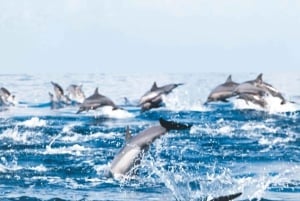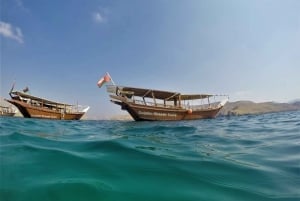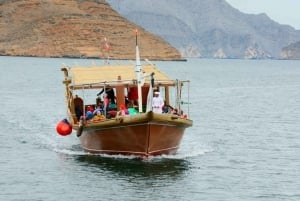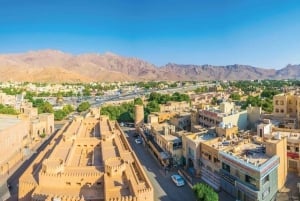Turtle Encounters in Oman
Approximately 20,000 giant green female turtles lay around 60,000 egg clutches each year in Oman.
Book Top Experiences and Tours in Oman:
If youʻre booking your trip to Oman last minute, we have you covered. Below are some of the top tours and experiences!- Muscat Half-Day City Tour with Audio Guiding
- Muscat: Big Bus Hop-On Hop-Off Sightseeing Tour
- Muscat: Dolphin Watching and Snorkeling Tour
- Salalah: Private 4-Hour Sightseeing Tour
- Khasab: Half-Day Dhow Cruise with Dolphin Watching
One of the most magical and memorable wildlife experiences in you can have is to witness a giant green turtle walk slowly up the shore from the warm sea searching for a spot to build a nest and lay her huge white eggs. Out of seven recognized species of marine turtle, five are found in Oman’s waters, and some of the world’s most significant nesting sites can be found here on Oman’s beautiful beaches, which in turn are now some of the top attractions in Oman.
Approximately 20,000 giant green female turtles (Chelonia Mydas) lay around 60,000 egg clutches each year in Oman. Of the 275 beaches in this country where turtles are found, the village of Ras Al Jinz – which sits on the eastern-most point of the Arabian Peninsula, in the Ras Al Hadd area of the Sharquiya region – has one of the most important nesting sites and one of the best places to see turtles in Oman: Turtle Beach. It forms part of the Ras Al Jinz Sea Turtle and Nature Reserve, which was established in 1996 and protects an area stretching over 120 square km, including a coastline of 45 km, and extends into territorial waters for 1 km.
The rising popularity of the turtle-watching experience in recent years has necessitated that the visitors are looked after appropriately, for the sake of the endangered turtles and their offspring. The Ras Al Jinz Scientific and Visitor Centre opened its doors in 2008 to promote social responsibility and ensure that visitors can enjoy the encounter without disturbing the ecology of the area. In fact, the reserve is now the only place where the public can witness the turtles nesting as the beaches in the adjacent areas are closed to visitors.
A marine biology and archaeology research facility has also been established on the reserve, as part of the conservation effort for turtles and other marine species. Sound environmental practices are promoted as well as raising awareness of the issues concerning the local and global habitat.








A permit must be obtained to visit the reserve, which is available from the Ras Al Jinz gate for a small charge. It is advisable to pre-book one of the sixty places available on the excursions because it’s by far most popular tourist activity in the area, and you wouldn’t want to miss your chance by being last in the queue!
The hatchlings have a number of natural predators such as birds, foxes, fish and crabs, while the adult turtles are vulnerable to sharks. Humans should never interfere with the ecosystem itself, but we are duty bound to protect the wildlife from the dangers we ourselves create. In conjunction with the Ministry of Environment and Climate Affairs, the centre aims to reduce the human actions which threaten the turtles, such as those that disturb their nesting process like noise and artificial light pollution, littering of nesting sites, driving vehicles on the beaches and even commercial harvesting of the animals for their meat and shells.
An experienced and committed guide will be appointed to your organised group and escort you to the beach in either evening or (very) early morning to hopefully catch the turtles in action. It is kinder to the turtles to view them in the morning, making use of the early sunrise instead of disturbing them with flashlights. Normal access to the beach is between the hours of 08.00 and 15.30.
Numerous archaeological sites are located in the reserve area, including age-old fishing villages and ancient tombstones. Noteworthy artefacts such as Oman’s earliest wooden boat and the oldest incense burner in the peninsula have been excavated here. The findings, among others, are indicative of the essential trade between Ras Al Hadd, the interior regions of Oman and also the surrounding countries and continents.




The three-hour drive from the capital of Muscat is worthy of an overnight stay. With this is mind, the centre offers bed and breakfast accommodation in its twelve well-appointed rooms. A restaurant and gift shop is also located within the centre.
For an experience with a little more character, the accommodation in the Turtle Beach Resort comprises thirty-three huts, constructed in traditional Omani style using date palm leaves, and some even come with air conditioning and en-suites. A dhow shaped restaurant caters for breakfast, lunch and dinner and there are facilities for indoor, beach and water sports.
With effort and determination from the reserve and its visitors, the turtles can continue to call the beaches of Oman home and generations of locals and visitors can experience the magic of these kind and gentle giants for years to come.
From Muscat, Ras Al Jinz can be reached by following the new highway (southbound) that links Muscat and the ancient seaport of Sur. From Sur, follow the coastal road for another half-an-hour until you reach Ras Al Jinz. Journey time is approximately three hours.


